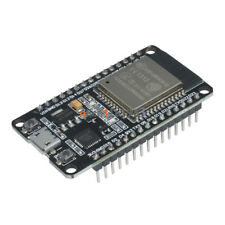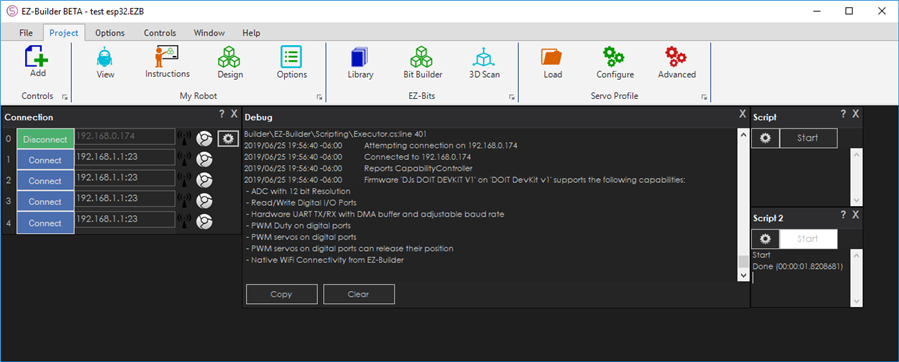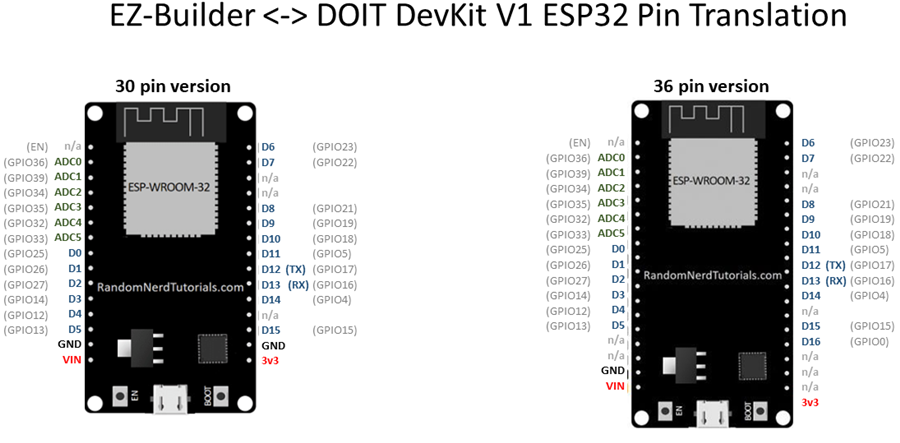
Esp32 Devkit V1 by Espressif
Firmware
- DJs ESP32 DOIT DevKit v1 Version 4 (updated 2024-12-18)
- EZ-ESP32 with Adafruit PCA9685 Version 1 (updated 2021-04-30)
The DOIT Esp32 DevKit v1 is a very affordable WiFi module with plenty of IO, including three hardware UARTs. Adding the firmware below makes the WiFi module an EZB that ARC can connect to. This firmware works with ARC versions greater than or equal to 2019.06.25.00.
*Note: For servo use with EZ-Cam, only pins 2,4,12-19,21-23,25-27,32-33 are recommended.

Video Tutorial
WiFi Modes
The code supports two WiFi modes: AP Mode, which turns the ESP32 into a WiFi server your computer connects directly to, and Client Mode, in which the ESP32 connects to your network router. You can view the IP Address and connection status information by viewing the Serial Monitor set to 115,200 in Arduino IDE.
Port Configuration
The pins in ARC are labeled D0 - D23. The ESP32 has GPIO-labeled pins, which are not in any ordered sequence. This translation chart below shows the mapping of the ESP GPIO to ARC Dx pins. The ports labeled TX/RX are the hardware UART ports, which correspond to hardware UART #0 in ARC.


I have done many small projects with the ESP8266 (temp sensors, garage door status, cell phone garage door opener, scrolling LED displays). Just great little boards, very cheap, WiFi and programming with the Arduino IDE they can't be beat. With this update, I guess it's time for me to try the new big brother ESP32. What Fun!
Thanks DJ
This looks like something I can play with and add some fun stuff around the house.
Those are good ideas! Perfect for these devices being so affordable. I think we bought a box for $4 each. What stuff do you guys have in mind?
i might make a controller for my blinds on the deck at my cabin
Updated the firmware to work with the latest beta ARC on 2019-06-25-00
Help install this firmware on M5stack! https://m5stack.com/collections/m5-core/products/grey-development-core
Hi, I understand that the firmware is for the DOIT ESP32 devkit1, but in France what I easily find it is the ESP32 NodeMCU, which has 38 pinouts ESP32 Do you think it could work, with this firmware or with minor changes ? Thanks
Not a clue - but they're usually $5 boards so it's worth a shot . Also, be warned that this board is really slow and doesn't do much.
. Also, be warned that this board is really slow and doesn't do much.
Ok, thanks. Maybe i will give it a try. It is really a lot slower than, let's say, an IO-tiny ?